The seed banks of civilization will help nation to chart its future course, Yang Yang reports.
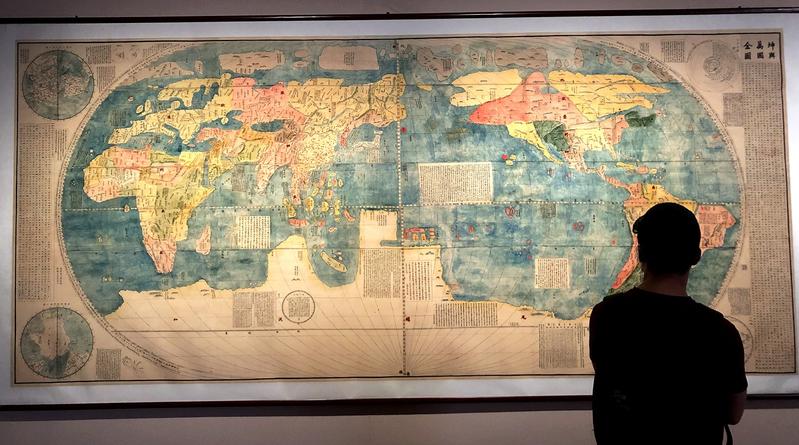 A copy of Kunyu Wanguo Quantu (A Map of the Myriad Countries of the World), believed to have been first created by Matteo Ricci and Li Zhizao during the Ming Dynasty (1368-1644), is kept at the China National Archives of Publications and Culture in Beijing. (YANG YANG / CHINA DAILY)
A copy of Kunyu Wanguo Quantu (A Map of the Myriad Countries of the World), believed to have been first created by Matteo Ricci and Li Zhizao during the Ming Dynasty (1368-1644), is kept at the China National Archives of Publications and Culture in Beijing. (YANG YANG / CHINA DAILY)
Ancient books, inscribed bronzeware, newspapers or food vouchers that carry distinct marks of different times, tapes, and even the first line of the code created to check people's COVID-19 test results, are all the "edition resources" that record the historical process of a culture. They are the gold seeds that witness the development of a civilization, and to keep these seeds is to nurture the gene of a civilization.
At the end of last month, after three years under construction, the China National Archives of Publications and Culture was inaugurated.
Made up of the headquarters Wenhan Ge (pavilion) in Beijing and three branches-Wenji Ge in Xi'an, Northwest China's Shaanxi province, Wenrun Ge in Hangzhou, East China's Zhejiang province, and Wenqin Ge in Guangzhou, South China's Guangdong province-the new archives will shoulder the responsibility of preserving and carrying forward the edition resources of China as a gene bank for the seeds of Chinese civilization.
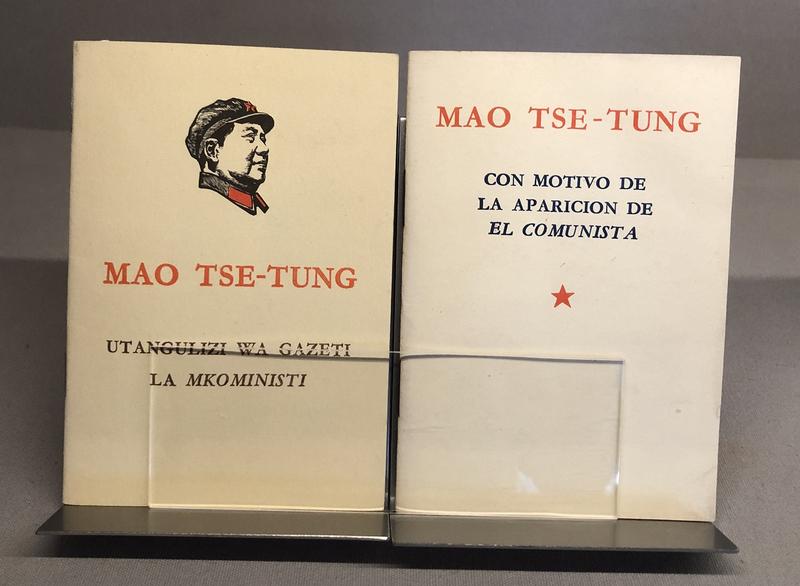 Among the many editions housed at Wenhan Ge in Beijing are translations of Chairman Mao Zedong's works in Swahili (left) and Spanish (right). (YANG YANG / CHINA DAILY)
Among the many editions housed at Wenhan Ge in Beijing are translations of Chairman Mao Zedong's works in Swahili (left) and Spanish (right). (YANG YANG / CHINA DAILY)
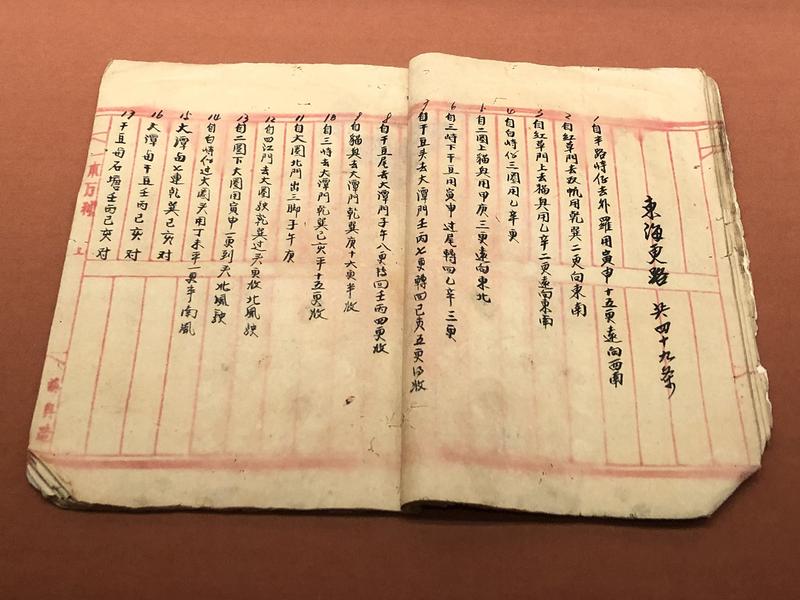 Pages from Genglu Bu, an ancient nautical travel log kept by fishermen on China's southeast coast. (YANG YANG / CHINA DAILY)
Pages from Genglu Bu, an ancient nautical travel log kept by fishermen on China's southeast coast. (YANG YANG / CHINA DAILY)
Sitting at the foot of the Yanshan Mountains, Wenhan Ge is about 50 kilometers from downtown Beijing. Now, it is home to more than 16 million copies and editions of various publications, in a broad sense, as that includes the inscribed bronzeware.
The extensive collection is generally grouped into 10 categories, including all the editions of publications since the founding of the People's Republic of China, as well as books created through the techniques of woodblock printing and rubbings, genealogy books, currency, stamps, historic ancient Chinese books, revolutionary literature, religious literature and fine editions of foreign books, among others.
"The China National Archives of Publications and Culture, with its headquarters and three branches, will facilitate the planning and coordinating, surveying and collecting, preserving and exhibiting and the research and exchange of edition resources," says Liu Chengyong, director of the China National Archives of Publications and Culture.
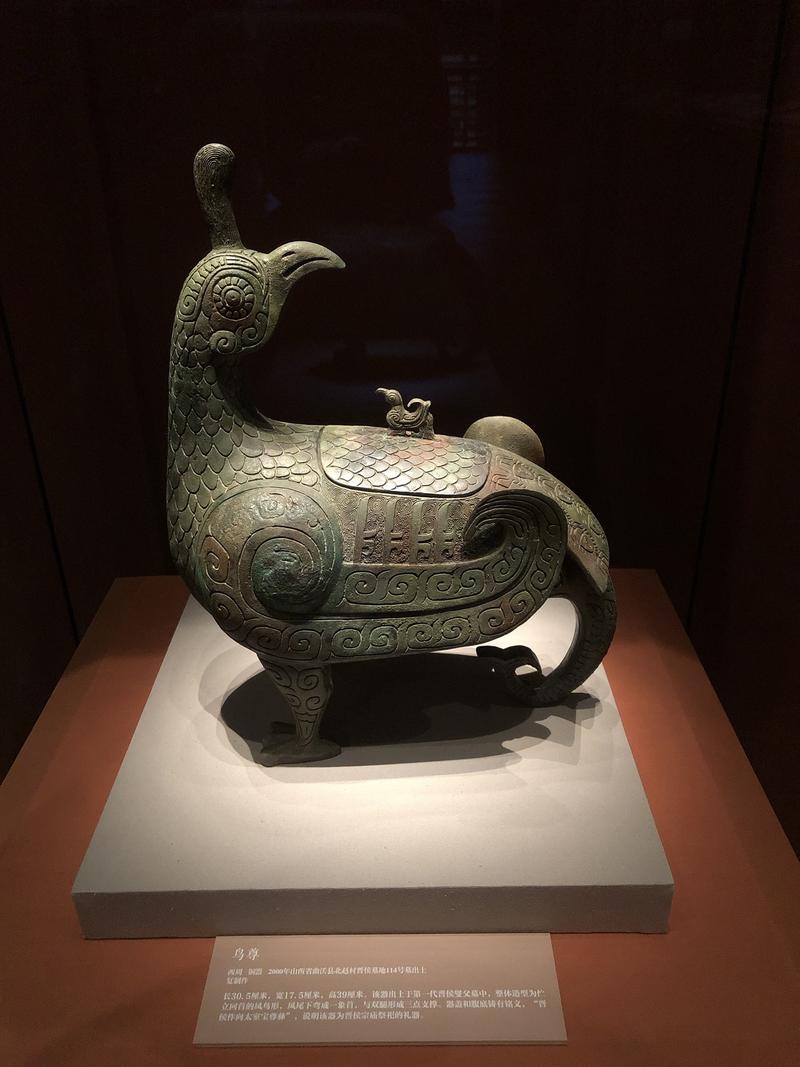 A bird-shaped bronzeware wine vessel from the Western Zhou Dynasty (c. 11th century-771 BC). (YANG YANG / CHINA DAILY)
A bird-shaped bronzeware wine vessel from the Western Zhou Dynasty (c. 11th century-771 BC). (YANG YANG / CHINA DAILY)
From official historians of the Zhou Dynasty (c. 11th century-256 BC), stone chambers of the Qin Dynasty (221-206 BC) and Tianlu Ge of the Han Dynasty (206 BC-AD 220), to the Hongwen Library of the Tang Dynasty (618-907), Chongwen Academy during the Song Dynasty (960-1279), Wenyuan Ge in the Ming Dynasty (1368-1644) and the seven imperial libraries of the Qing Dynasty (1644-1911), China has always attached great importance to the preservation of publication editions, he says.
The national archives will become a new cultural landmark of the country, he says.
Viewing the archives from above shows that the whole area consists of three levels of compounds, which follow traditional Chinese architectural aesthetics, says Zhu Yufan, chief designer of the Wenhan Ge's landscape.
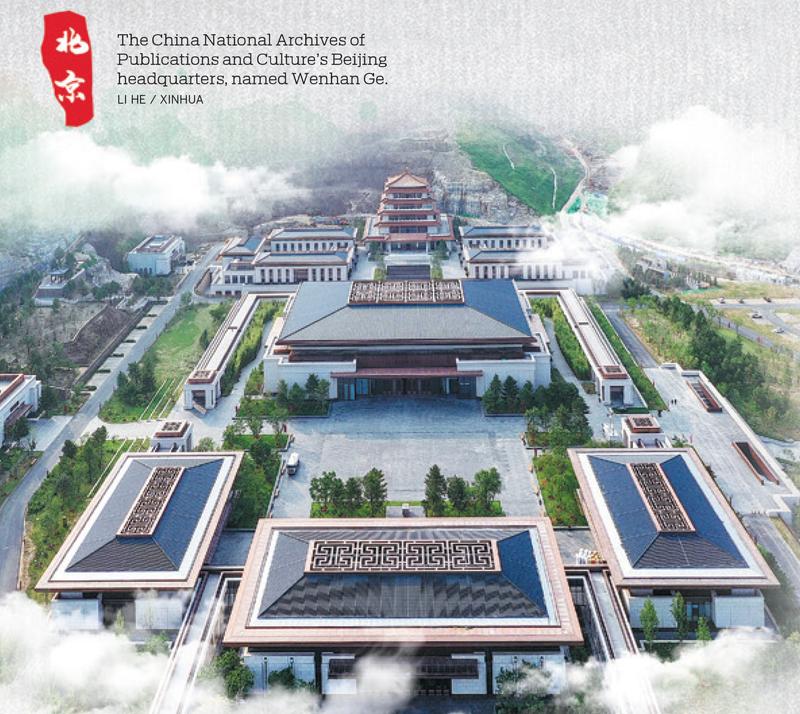 The China National Archives of Publications and Culture's Beijing headquarters, named Wenhan Ge. (LI HE / XINHUA)
The China National Archives of Publications and Culture's Beijing headquarters, named Wenhan Ge. (LI HE / XINHUA)
The first compound has the Wenxing Building as the main structure, followed by a courtyard and the national study Wenhua Hall on the second level and the Wenhan Ge is located on the third.
The newly completed archives in Beijing are presenting exhibitions such as Inception of Chinese Civilization: Exhibition of Ancient Chinese Publications and Cultural Articles at the national study, alongside the Light of Truth: Classic Archives Exhibition of Marxism Localization and Modernization in China, over the three floors of the Wenhan Ge, and The History of Chinese Currency, The Craftsmanship of Printing and Chinese Stamps in the Wenxing Building.
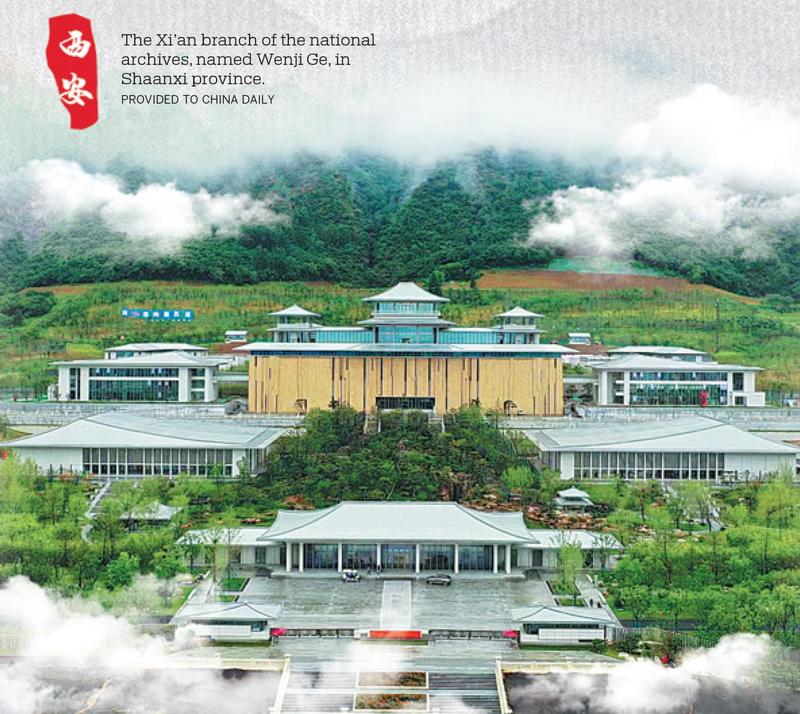 The Xi'an branch of the national archives, named Wenji Ge, in Shaanxi province. (PHOTO PROVIDED TO CHINA DAILY)
The Xi'an branch of the national archives, named Wenji Ge, in Shaanxi province. (PHOTO PROVIDED TO CHINA DAILY)
In the Wenxing Building, the exhibition, The Craftsmanship of Printing, employs 100 precious artifacts to systematically display the developmental process of printing techniques in China, from a book's layout, to manufacture, design and restoration. The showcases contain many precious ancient books. One of them is a copy of a Tangut-script translation of Tibetan Buddhist texts.
"It's the earliest existing printed book using the techniques of wooden movable-type printing, created in the 13th century," says Zhao Yinfang, the docent of the exhibition. Comprising nine volumes, the book, excavated in the Ningxia Hui autonomous region in 1991, provides important evidence for the invention of movable-type printing in China.
 The Hangzhou branch of the national archives, named Wenrun Ge, in Zhejiang province. (PHOTO PROVIDED TO CHINA DAILY)
The Hangzhou branch of the national archives, named Wenrun Ge, in Zhejiang province. (PHOTO PROVIDED TO CHINA DAILY)
Another exhibition in the Wenxing Building, The History of Chinese Currency, presents the evolving history of money in China, from the earliest cowries, metallic currency during the Qin and Tang dynasties, and the world's earliest paper currency used by Chinese ancient people in the Song Dynasty, to the latest digital renminbi.
At the national study Wenhua Hall, 44 big bookcases erected around the grand hall house more than 30,000 classic books. On the second floor is Inception of Chinese Civilization: Exhibition of Ancient Chinese Publications and Cultural Articles. Zhao points to zun of He, a piece of bronzeware from the Western Zhou Dynasty (c. 11th century-771 BC). It is special because it is inscribed with early Chinese characters that spell out zhongguo (China), the earliest physical record of the term, despite that the meaning differs from that of today's China.
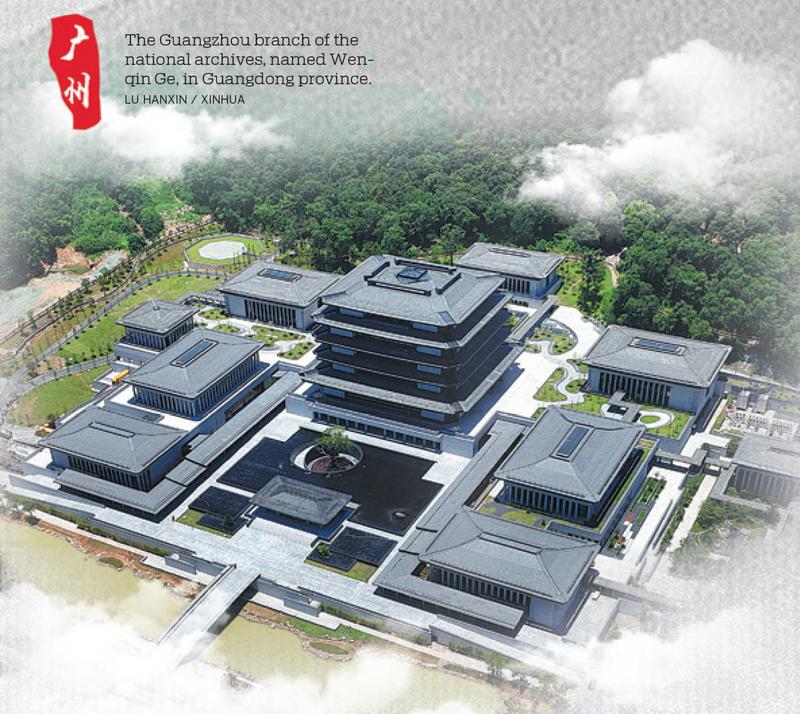 The Guangzhou branch of the national archives, named Wenqin Ge, in Guangdong province. (LU HANXIN / XINHUA)
The Guangzhou branch of the national archives, named Wenqin Ge, in Guangdong province. (LU HANXIN / XINHUA)
"This piece is precious. It's a vehicle of what we call edition, especially the inscriptions on it. All the bronzeware we chose is inscribed with words to display their value as the carrier of editions," she says.
"China National Archives of Publications and Culture is a landmark cultural project of the new era," Liu says. "It will preserve all kinds of edition resources that have important historical and cultural value. The goal is to continue the line of Chinese culture, strengthen cultural confidence, display China's national image and promote the communications between civilizations."
Contact the writer at yangyangs@chinadaily.com.cn


